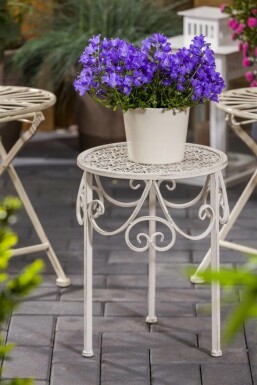
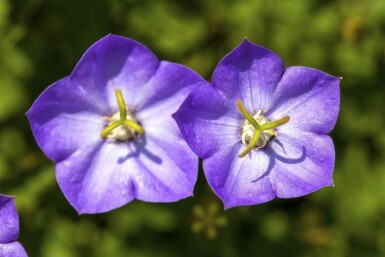
30cm





Updated on 10 September 2025
We regret to inform you that we are currently unable to ship orders to the United Kingdom. We anticipate being able to resume shipments at the beginning of 2026.
Campanula is perfect for gardens as an edge plant or ground cover, offering vibrant summer accents. Its long-lasting blooms attract pollinators, needing little maintenance. Available in many varieties, it thrives in rock gardens or pots, enhancing your garden's charm.


30cm





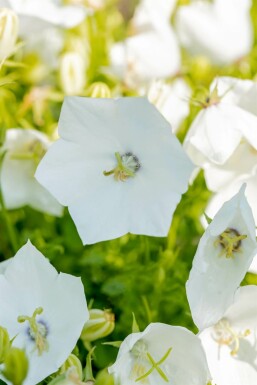
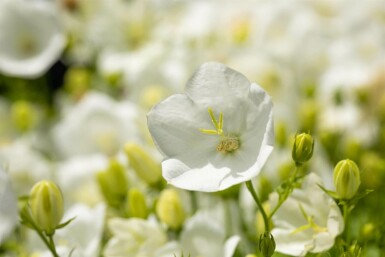
30cm



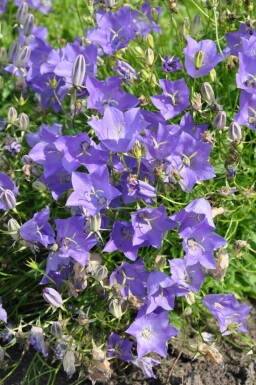
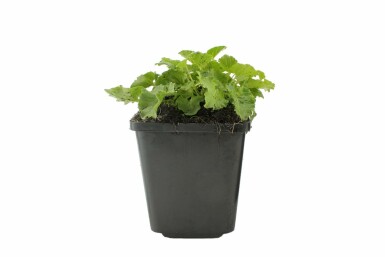
20cm



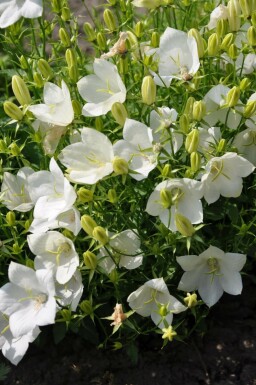
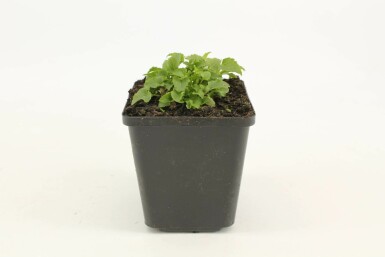
20cm



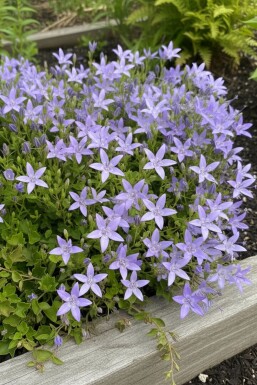
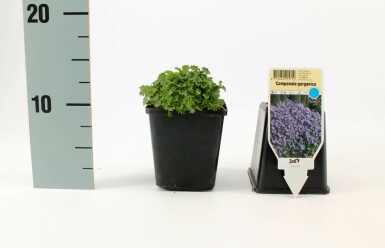
15cm



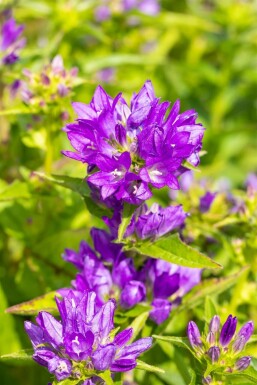
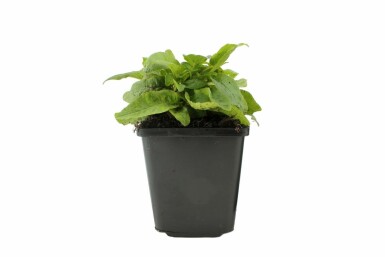
30cm




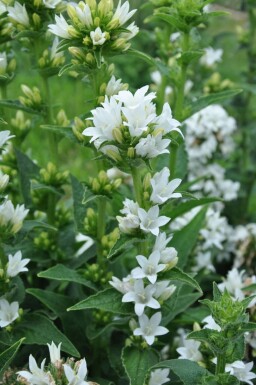
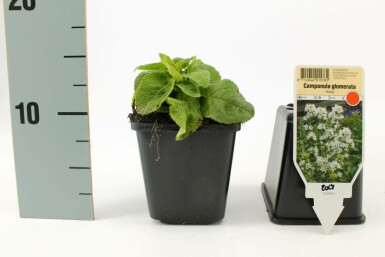
60cm



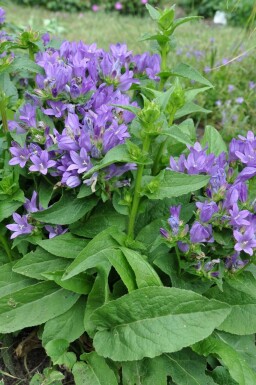
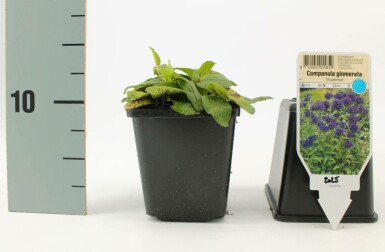
50cm




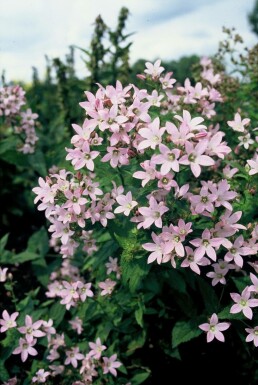
120cm



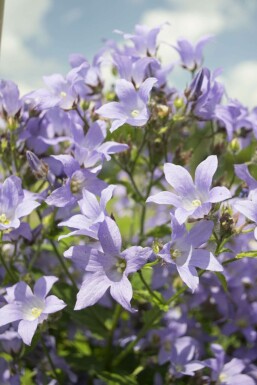
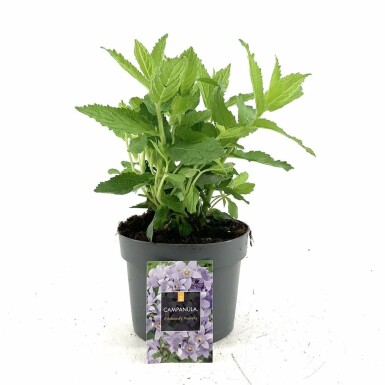




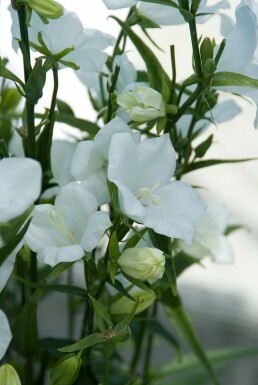
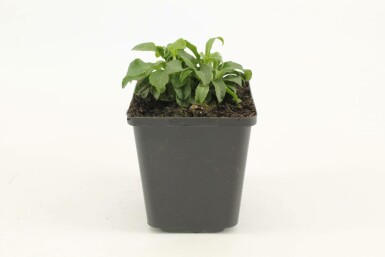
80cm


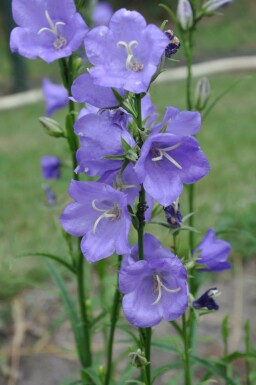

80cm



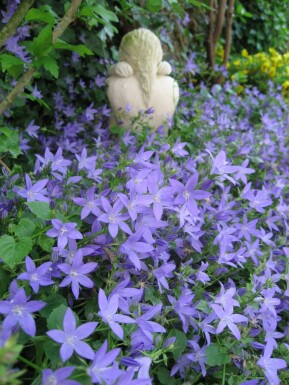






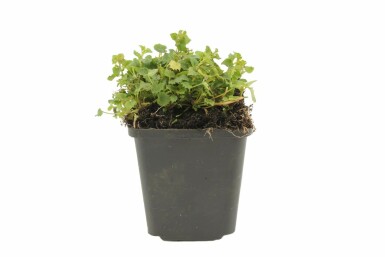
15cm



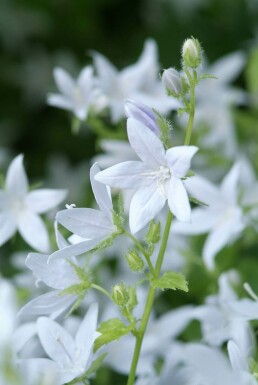
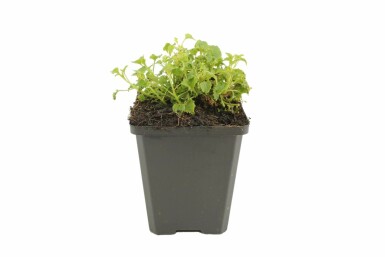
15cm



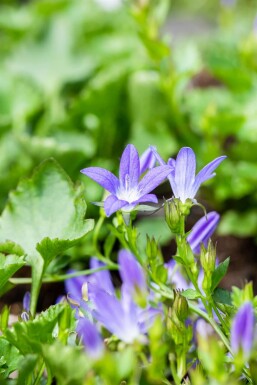
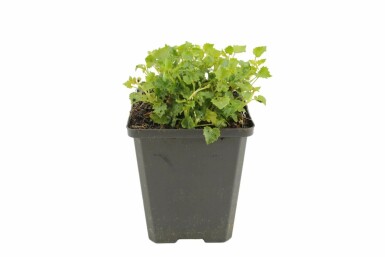
15cm



Campanula is a delightful addition to any garden, known for its bell-shaped flowers that come in shades of blue, white, and purple. These blooms appear from spring to summer, offering vibrant colour to brighten garden borders. Campanula is versatile; it can be used as an edging plant, ground cover, or even in a rock garden. With some species having long stems, it can provide vertical accents, while others serve as excellent ground cover. This perennial is not only a summer bloom but also a favourite among pollinators. Discover how Campanula can transform a garden into a cottage garden haven by considering the best options available in the UK market today.
Campanula, known as bellflower, is a versatile plant in the garden. It is part of the Campanulaceae family and is known for its charming, bell-shaped flowers. Synonyms for Campanula include Trailing bellflower and Cottage perennial. These plants are used for various purposes in the garden, such as borders, ground cover, and rock gardens. They work well in pots, planters, hanging baskets, and wall planting, adding beauty to any space. Campanula originates from Europe, Asia, and North Africa. It can thrive in UK gardens, offering pollinator value as it provides nectar and pollen for bees, bumblebees, and butterflies. Its flowers can be either upright or trailing in form, making it suitable for different garden styles, including the popular cottage garden. The name bellflower comes from the Latin 'little bell', symbolising humility and tenderness. It is often found in religious gardens and near abbeys. Campanula can be perennial or biennial, with a moderate growth rate, making it ideal for edges and borders. It self-seeds, ensuring it returns each year. For those looking to enhance their gardens, consider adding Campanula by purchasing plugs in the UK.
Campanula, known for its distinct bell-shaped flowers, is a versatile perennial or biennial plant. It thrives as ground cover, in borders, or hanging baskets. Its growth habit is diverse, including low-growing, clump-forming, and occasionally climbing. The foliage is typically fine and hairy, with long or ground-covering stems based on the species. Campanula's growth progresses from sprouting in early spring to its peak by late summer. The development of Campanula begins with initial shoots appearing in spring. Flower buds form and open from May to September, influenced by climate and care. Moderate temperatures and well-drained soil support its blooming process. The flowers' colours range from blue, purple, and white to lavender-blue, affected by factors such as variety, soil conditions, and light exposure. The Campanula is a versatile ground cover with bell-shaped flowers in purple and blue. The plant is also known for its pollinator value, attracting bees and other insects. While the fragrance isn't a key feature, some species might offer a mild scent, adding biodiversity to gardens. Mature Campanula plants vary widely in size, from 10 cm to 1.5 m tall, depending on the species and growing conditions. Regular care and the right environment are crucial for achieving its full height potential.
Campanula, known for its charming bell-shaped flowers, has distinct leaves that vary in shape from ovate to elongated, with edges that are toothed or deeply lobed. The leaves are typically green, though some varieties may offer a grey-green hue. These colour variations can enhance the beauty of borders in a garden. In winter, Campanula retains its foliage, making it a resilient evergreen choice. The plant’s winter hardiness is commendable, thriving in zones 3 to 5 and able to withstand temperatures as low as -40°C. Soil conditions and wind exposure can influence its frost tolerance, but Campanula generally remains unaffected by harsh winters.
While Campanula stays green throughout the year, it also copes well with heat and drought due to its deep root system and airy stems. Originating from diverse climates, it thrives with minimal water once established, making it ideal for areas with occasional dry spells. Non-toxic to children and pets, Campanula is a safe addition to family gardens. For biodiversity, this plant attracts bees and other pollinators, supporting the local ecosystem by providing nectar and habitat. Its long flowering period from May to August makes it an excellent choice for maintaining year-long garden interest and sustenance for beneficial insects.
Campanula, often referred to as bellflower, is a charming addition to any cottage garden. Known for its delicate bell-shaped blooms, it offers a touch of whimsy and elegance. This versatile plant can brighten up outdoor spaces with its vibrant colours and diverse forms, making it a favourite among gardening enthusiasts. Here are some ideal ways to incorporate Campanula into a garden setting:
Campanula can be a versatile addition to any garden. It pairs beautifully with plants like Geranium, Nepeta, and Alchemilla. These combinations create a stunning display. Geranium offers lush foliage and contrasting blooms. Nepeta, with its lavender flowers, complements Campanula’s blue or white shades. Alchemilla, with its lime-green leaves, adds texture. Campanula flowers for a long time and pairs effortlessly with colourful perennials. Using Campanula as an edge plant or ground cover in rock gardens enhances the natural look. It thrives alongside Achillea, which adds height and colour. Hosta makes a perfect partner for shady spots, as its broad leaves contrast well. These plants support bees, ensuring a lively garden. Campanula’s adaptability makes it ideal for dry stone walls and borders. Its summer bloom brings life, while its ability to attract bees adds ecological value. This combination not only looks beautiful but also creates a thriving, healthy garden ecosystem.
Campanula thrives in full sun to light shade. It's important to consider the amount of sunlight and shade in the garden. Too much sun can dry out the soil, while too much shade may reduce flowering. Campanula can handle some wind, but strong winds can damage its stems. Plant it in a sheltered area or use hedges to block wind. For optimal growth, Campanula prefers calcareous, well-drained soil. This cottage perennial grows best when the soil is rich in nutrients and retains moisture. Adding compost can improve soil fertility. Regular fertilisation and ensuring good drainage enhance growth. Soil moisture is vital for Campanula. The balance between sun exposure and soil type affects moisture retention. Well-drained soil helps maintain the right moisture level, preventing root rot. Campanula prefers neutral to slightly alkaline soil pH. Testing the soil pH ensures it supports healthy growth. Adjust pH levels by adding lime if necessary.
Campanula should be planted in spring or late summer when temperatures are mild. Plants delivered in pots can be planted year-round, except during frost periods. Those with root balls are best planted in spring or autumn. The planting distance for Campanula depends on the type. Groundcover varieties may need more space than upright ones. Always check plant properties on the Heijnen product page for specific planting advice. The right soil preparation is crucial for Campanula. Use well-drained, lime-free soil, and add compost if soil quality is poor. Heijnen planting soil is recommended for the best results. Campanula prefers locations with full sun to partial shade. When planting, ensure the soil is moist and well-fertilised. Water thoroughly after planting and continue watering regularly until the plants are established. Fertilise in spring with an all-purpose garden feed for healthy growth. As a perennial, Campanula (bellflower) makes a wonderful addition to any cottage garden, attracting bees and other pollinators. With deep roots, it is drought-tolerant and can self-seed easily. For best results, plant Campanula in an area with good light and proper spacing.
Campanula, a delightful perennial, is known for its bell-shaped flowers that brighten gardens from May to August. Proper care ensures they flourish in different settings like borders and rock gardens. Here are essential tips for maintaining these beautiful flowers.
With these care tips, Campanula can thrive as a vibrant addition to any garden, offering beauty and ecological benefits as a source of nectar for pollinators. Consider buying bellflower for versatile planting options.
Campanula, known for its enchanting bell-shaped blooms, adds delicate beauty to gardens. The flowers come in shades of blue, purple, white, and lavender blue, bringing a soft charm. With its bee-friendly nature, Campanula attracts bees and blooms abundantly as a versatile bee plant. This perennial plant works well in borders and edges, offering a delightful summer bloom. The leaves are typically green, sometimes with a touch of grey-green, adding subtle texture. Campanula's growth form is versatile, from low-growing ground cover to clump-forming and climbing varieties. It creates an inviting habitat for pollinators, making it a must-have in a cottage garden. As a long-blooming, low-maintenance flower, it thrives as a pollinator-friendly choice. Whether used as a ground cover or a border plant, Campanula (Bellflower, Trailing bellflower) brings elegance to any garden setting. Its ability to self-seed ensures its presence for years, enhancing the garden's visual appeal and ecological balance.
Campanula, commonly known as bellflower, is a popular choice for UK gardens. These lovely flowers are known for their range of forms, from upright to trailing, and their ability to attract pollinators. Let's explore some of the most popular species of Campanula that bring beauty and biodiversity to gardens across the country.
Campanula, commonly found in many gardens, brings beauty and diversity. This plant is known for its unique features and benefits that make it a favourite among gardeners.
Advantages:
Disadvantages:
Proper soil preparation, positioning, and care, including timely fertilisation, can reduce disease and pest risks. Always ensure the best care for optimal growth and flowering.
Campanula is perfect for those looking to enhance their garden with a touch of elegance. With its long blooming period from May to August, it provides constant beauty. Available in many varieties, Campanula serves excellently as an edge plant, ground cover, or in a rock garden. For those interested in attracting pollinators, Campanula is a fantastic choice, offering great pollinator value. Its low maintenance makes it ideal for any gardener, whether experienced or just starting out.
Consider the differing flower forms, as some are upright while others trail beautifully. This versatility means they can be placed in sun or shade, bringing colour to any spot. For those who appreciate stunning gardens, Campanula, also known as bellflower, is a must-have. This lovely plant can accentuate blooming summer borders or create vertical accents with its tall varieties.
To enjoy these beautiful flowers, buy Campanula plugs in the UK now. Order Campanula (Bellflower) from Heijnen for long-lasting blooms of charming bell-shaped flowers in borders, pots, or rock gardens.
We would like to provide some tips on how to plant and care for a Campanula. By following these tips, you can be sure to enjoy your Campanula for a long time.
Campanula thrives best in well-drained, calcareous soil, enjoying full sun to partial shade. It's important to provide moist, nutrient-rich ground to support its growth. Positioning in a sheltered area helps shield it from strong winds, promoting a healthy plant structure. The right spot enhances blooming and results in vibrant, healthy plants. Various Campanula types are excellent for borders or as ground cover, and they adapt well to rock gardens, pots, or hanging baskets. A well-chosen location encourages better growth, richer blooms, and healthier foliage. Campanula prefers well-draining soil and can tolerate some drought thanks to its deep roots. Whether used in an edge planting or as a vertical accent, the correct placement is vital for its prosperity. Planting in spring or late summer offers the best results, ensuring flowering accents throughout the summer months.
Proper soil preparation is crucial for planting Campanula. Start by loosening the soil to improve water drainage and mix in organic materials like compost to enrich it with nutrients. This helps the bellflower thrive by allowing roots to establish deeply, ensuring better growth. Planting pot-grown Campanula is possible all year round, except during frost. For those in burlap, the best time is autumn or spring, keeping the wrapping intact. After planting, water the plants thoroughly. This is vital until they are well-rooted and can sustain themselves. The size of the Campanula determines how many can be planted per square metre. Ensure enough space for each plant to grow comfortably. Proper soil work, correct planting time, and initial care are key for thriving Campanula in any garden.
Fertilising Campanula is key for ensuring strong growth and vibrant blooms. The right nutrients improve the plant's overall vitality. For bellflowers, use an organic or organic-mineral fertiliser like Heijnen. This type of fertiliser supports healthy growth and rich blooming. Campanula should be fertilised twice a year. Apply a light annual fertilisation in spring. During the bloom peak, use a potassium-rich feed to enhance flowering. The amount of fertiliser depends on the size of the plant, but always follow the recommended dosage on the package. Nutrients are absorbed when dissolved by rain or watering. In dry periods, it's important to water the garden after fertilising. This helps nutrients reach the roots, supporting the plant's health and vitality.
Campanula needs regular pruning to thrive in a garden. Removing faded flowers encourages new blooms, helping the plant stay healthy and look its best. Pruning also prevents it from spreading too much. The best time to trim Campanula is after it has finished blooming. Use sharp secateurs to make clean cuts, which is important to avoid harming the plant. A good tip is to cut back to the base in autumn or spring, ensuring that it maintains a tidy appearance. Regular maintenance will make sure that the Campanula remains vibrant and lively in any garden setting.
Campanula prefers regular watering, especially during growth and bloom. Newly planted Campanula plants need consistent moisture to establish strong roots. Once established, water only during extended dry periods. It's best to water thoroughly rather than a little each day, ensuring the moisture penetrates the soil deeply. Early morning or late afternoon is ideal for watering, minimising evaporation. Checking the soil helps determine if watering is necessary; moisture should be present a few inches below the surface. Ensure excess water can drain away to prevent soggy conditions, which are problematic for Campanula whether in the ground or in pots. Drip irrigation is most effective once the plant is fully rooted; in the beginning, additional watering is needed. Most Campanula species have moderate to good drought tolerance, allowing them to withstand short dry spells when established.
Campanula, known for its bell-shaped flowers, offers a touch of tenderness to any garden. These flowers, which can be blue, white, or purple, are not just visually appealing but also attract pollinators like bees. Campanula is safe for families as it is non-toxic to children and pets. Often seen in religious gardens, its symbolism of humility adds a unique charm. Being a low-maintenance plant, Campanula makes an excellent choice for borders or ground cover.
Campanula is excellent for division after flowering or in early spring. Dividing campanula helps rejuvenate the plant and keeps it thriving. It removes old parts, allowing new growth to flourish. The benefits of dividing include healthier plants and the opportunity to spread beauty throughout the garden. To divide, carefully dig up the plant, remove old sections, and replant young ones back into the soil. This process is best done every few years. The ideal time for dividing is in the autumn. Using a sharp spade or garden knife is recommended for clean cuts. Remember, dividing helps create more plants and keeps the garden vibrant.
Bellflower is a popular choice for any garden with its charming, bell-shaped blooms in blue, purple, and white. Known for its long-lasting flowers and versatility, it serves as an excellent ground cover or border plant. Perfect for attracting pollinators, this low-maintenance plant thrives in various garden settings. Buy Campanula (bellflower) from Heijnen to enjoy its beauty and ecological benefits.
